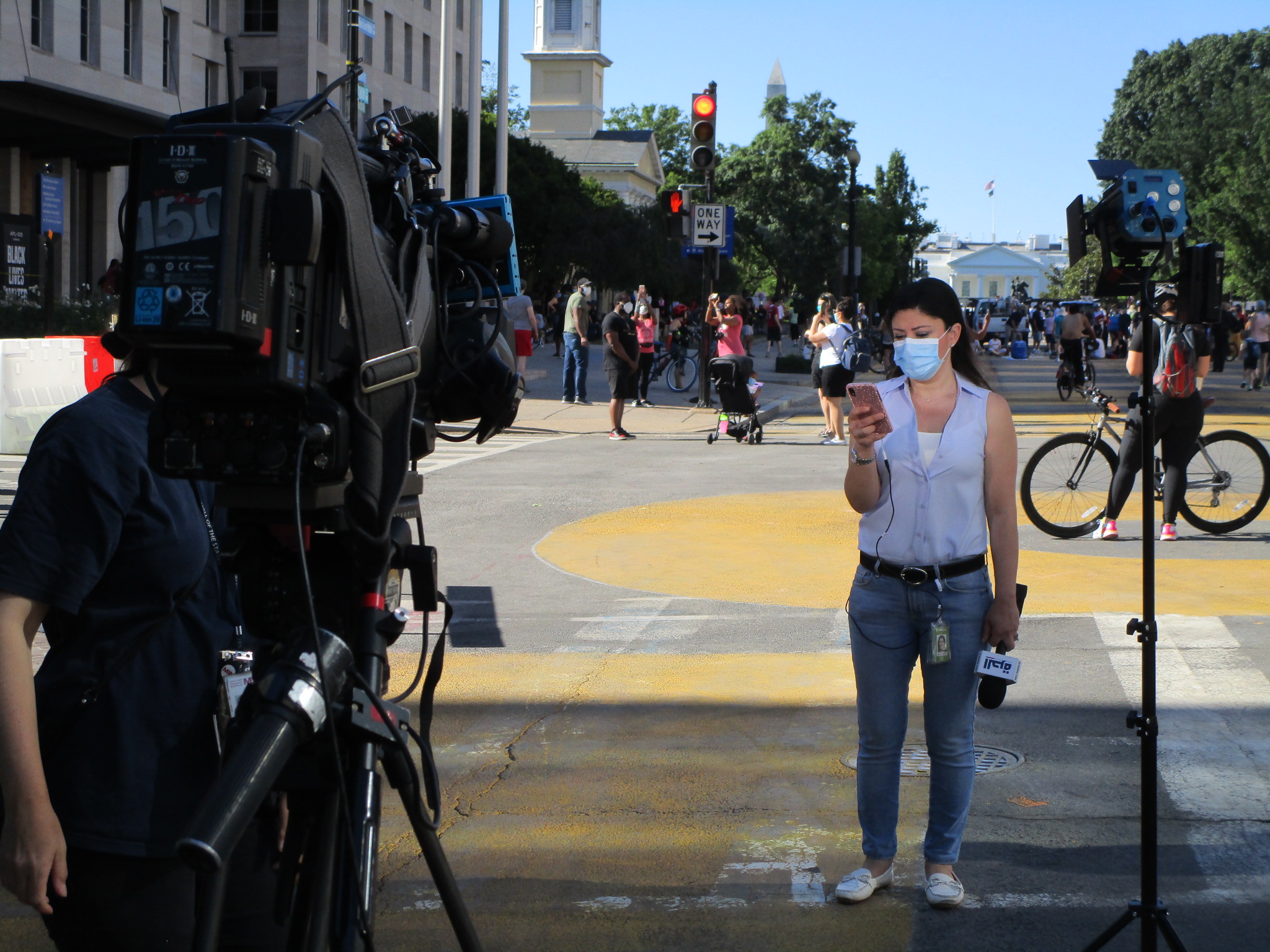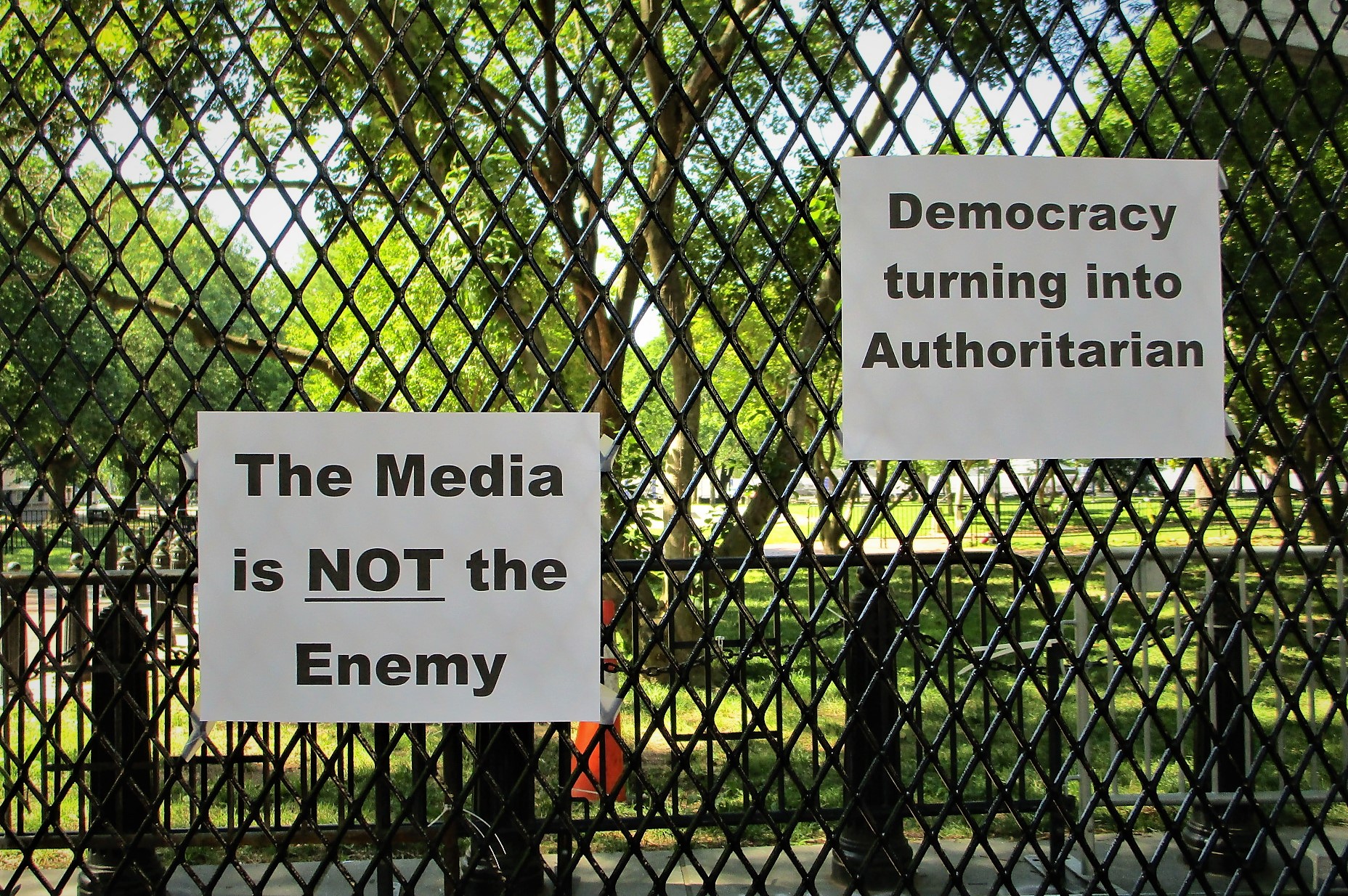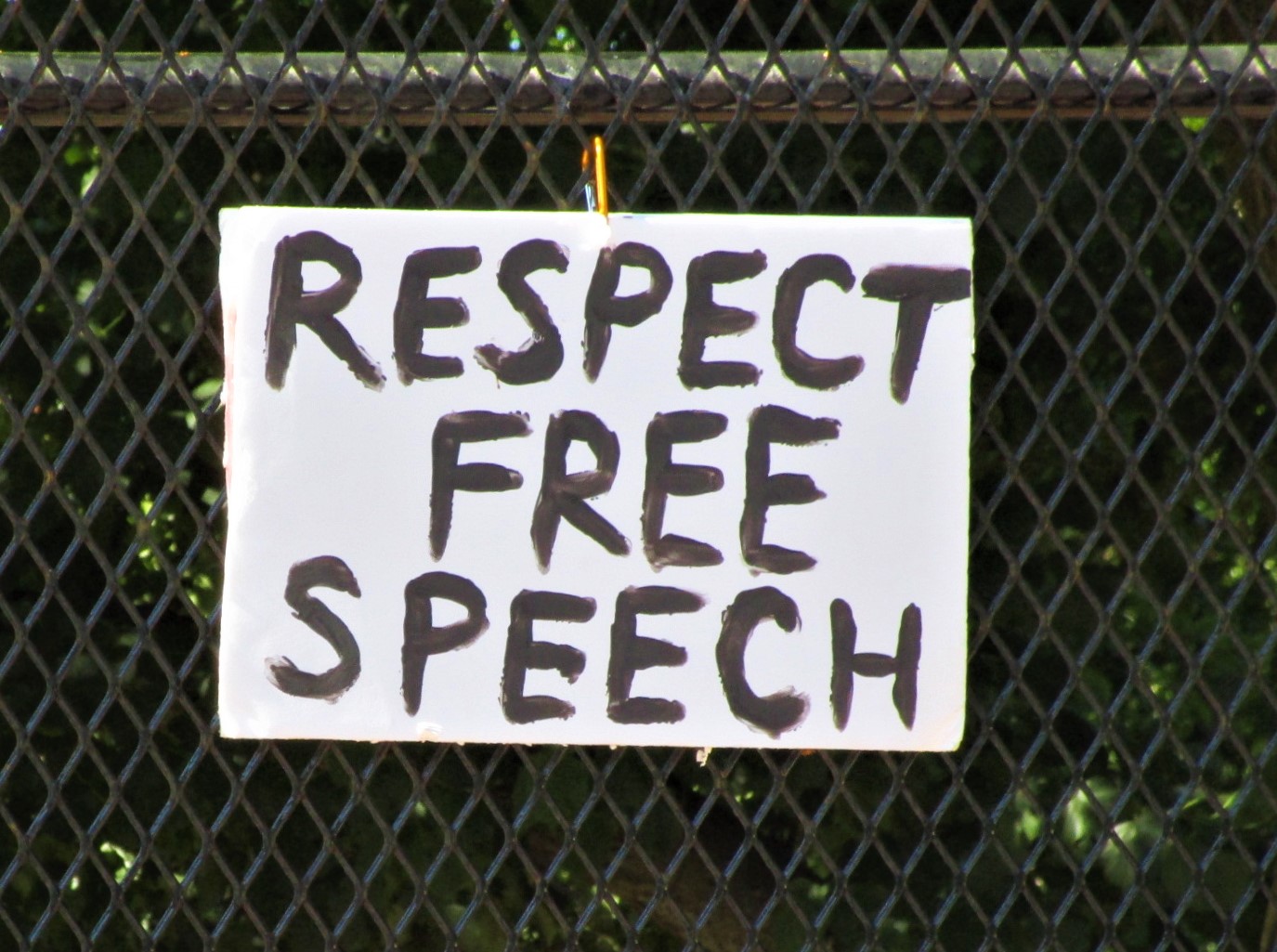Police Confrontations with Journalists Growing More Intense
RTDNA guidelines, Congressional efforts unlikely to stifle problems soon

During this lull -- between June's civil unrest following George Floyd's death and August’s political conventions, usually a hotbed of contentious confrontations -- there's an opportunity to evaluate the disconnect between law enforcement agencies and journalists. Discontent has simmered on both sides for generations, but it is becoming ever more dangerous for reporters to cover legitimate public assemblies where police are sometimes literally gunning for them.
“No journalist goes out in the field planning to get arrested,” said Dan Shelley, executive director and chief operating officer of the Radio Television Digital News Association (RTDNA). “They are there as witnesses to collect the facts and report them out broadly…. the same public on whose behalf the law enforcement officers are acting.” He discussed the evolving police/press process in the midst of recent live telecasts during which reporters from CNN, KPIX-TV, Australian TV and other outlets were attacked or arrested as they covered protest demonstrations.
While last month's police/media interactions loom large, the upcoming political conventions will pose another challenge. Although the Democrats’ convention in Milwaukee is expected to be largely virtual, the physical presence at the re-located Republican National Convention in Jacksonville is still uncertain. Recent history suggests that whatever the scale, the nominating (coronation?) events bring out protests and accompanying police responses. There are classic memories such as NBC's John Chancellor reporting "from somewhere in custody” at the 1964 Republican convention near San Francisco and CBS's Dan Rather knocked to the floor and gut-punched by a private security officer at the 1968 Democratic convention in Chicago.
As media companies, police and others make plans for the conventions, they are also evaluating what to expect during the long, hot summer ahead with so many other health, economic and inevitably weather issues that will affect Americans in coming months.
RTDNA working groups have been developing the “correct verbiage to use in news stories” to understand how to be respectful of law enforcement officers, said Shelley, a former WCBS-TV executive producer as well as director of digital services. RTDNA’s “Guidelines on Civil Unrest” warn reporters not to use words like “protest” and “riot” (or “protester” and “rioter”) interchangeably.
“Protests can be legal or not, while rioting is by definition a crime,” Shelley explained.
Shelley conceded that sometimes reporters are “just in the wrong place at the wrong time.” Others contend that they are in the right place, doing their jobs, while law enforcement officers are focused on doing their own jobs, which may be calming or breaking up a crowd without paying attention to details about who’s who.
Broadcasting & Cable Newsletter
The smarter way to stay on top of broadcasting and cable industry. Sign up below
The Committee to Protect Journalists tallied nearly 500 incidents in U.S. cities from late May through June where police and/or protesters' actions affected reporters. According to the U.S. Press Freedom Tracker (a joint project of CPJ, the Freedom of the Press Foundation, and other free-press organizations), during the weeks after George Floyd's death in Minneapolis, there were 112 physical attacks on reporters (67 by law enforcement officers); 64 arrests of reporters and about 200 tear gassings, pepper sprayings and 104 rubber-bullet or projectile strikes. In addition, the report identified nearly 70 incidents of media equipment or newsroom damage.

The numbers merely encapsulate the situation. The on-screen arrests of TV reporters such as CNN’s Omar Jimenez in Minneapolis and KPIX-5 News reporter Katie Nielsen in Oakland, California, to name just two of about 60 such arrests, plus the devastating injuries to photographers – notably freelance photojournalist Linda Tirado, who lost vision after being hit in the eye by an expanding foam bullet early in the Minneapolis street demonstrations – became the focus of the first wave of critiques.
So far there has been almost no official local government response to the actions of local police in roughing up journalists who were doing their jobs. Requests to the organizations such as the International Associations of Chiefs of Police, the Fraternal Order of Police, the National League of Cities and other groups generated no response, despite multiple efforts to obtain their views.
Constitutional Protection, New Laws
Police reform legislation now in Congress doesn't deal with protection of reporters and media. The “best practices” recommendations in the bills may make it safer for reporters caught up in protests, but experts contend that First Amendment mandates are still the best protection.
Both the Republicans’ S. 3985, the “Just and Unifying Solutions to Invigorate Communities Everywhere (JUSTICE) Act,” and the Democrats’ H.R. 7120, the “George Floyd Justice in Policing Act of 2020,” include “best practices” sections as well as directives for reviews police actions locally. Journalists could find protection under one section of the House legislation, the “Police Exercising Absolute Care With Everyone (PEACE) Act,” which recommends "deescalation tactics and techniques” that could apply to treatment of reporters.
RTDNA's Shelley acknowledges that attempts to avoid confrontations by putting words such as “Press” or “Media” on headgear or clothing, such labels “often make no difference to police” and may actually flag the journalists as “targets for media-haters in the crowd.” He also cited problems that arise when rabble-rousers don a “Press” vest or cap in hopes of avoiding rough treatment, and that police have become suspicious of such characters – and thus feel entitled to take aim at anyone wearing a press credential. He contends that even in tense situations, “officers should make the presumption” that a person is a journalist if he or she identifies as such.
“As journalists we don’t want poseurs out there who claim they are journalists [including freelancers] if they are not,” Shelley says.
Accreditation Won’t Necessarily Help
Admittedly, identifying legitimate journalists is an ongoing dilemma when anyone with a phone camera or a blog can self-declare himself or herself a reporter. At a Zoom video conference organized by the International Center for Journalism in early June, reporter Branden Hunter of the Detroit Free Press explained – as have many others – that merely being a “young black male” made him a police target, even though he was wearing a media pass given to him by the Detroit Police Department.
“They ignored it,” Hunter recounted.
A 24-year-old Des Moines Register reporter, Andrea Sahouri, was pepper-sprayed and arrested on May 31 while covering a protest and was charged with interfering with police. She claimed she identified herself and has pleaded not guilty. Last week she asked a judge to produce more evidence to back the charge, including police reports and body camera recordings, The Register reported.
Don Aaron, the Nashville Police Department’s public information officer and a former reporter at a local TV station, said his force seeks to alert officers of special treatment for reporters. He cited a recent curfew order which was accompanied by careful directives to “make sure that all officers know that media representatives were exempt from a curfew on downtown streets.”

“We want our police officers to know and appreciate the media’s role, even during protests,” Aaron said, explaining that a general curfew was imposed after rocks and bottles were thrown at officers and the city’s historic courthouse was attacked. He told me that the media members asked permission to cover events after curfew hours and, he said, “we’ve continued to let officers know that media representatives are allowed to be there to complete their missions as reporters.”
Aaron acknowledged the challenges of recognizing “new media” reporters, which may be difficult to parse out during tense situations.
For example, the issue of accreditation is a constant conundrum. In Detroit, like New York City and a handful of other jurisdictions, the police issue a “Press Pass,” although it’s often a controversial process. Big media companies also distribute photo identification badges/cards – but those are easily obscured in the heat of confrontations. Several publications ran images of press badges worn on cords around reporters’ necks during the melees. The badges were shattered and broken.
Only a few major metropolitan law enforcement agencies issue press credentials for local reporters, notably the New York City Police Department. Accredited reporters must wear a visible badge, but there have been incidents in recent years where badged journalists have been attacked by police. Moreover, a police commander can revoke the credentials on the spot with no right of appeal.
Educating Law Enforcement
One ongoing challenge is to educate police about press freedom rights. Most local law enforcement officers take an oath to support the U.S. Constitution as well as state constitutions, but their actual training may be limited to about two hours of media training while at the police academy, according to sources I interviewed -- hardly enough time to delve into the First Amendment. Supervisors get additional training as they work their way up the ranks, but those constitutional values may lapse in the heat of a confrontation
Many observers, especially protective media organization leaders, contend that the police/media relationship is “the worst I’ve ever seen” (or some variation on that wording). But the contentious nature has long been obvious, notably in high-visibility confrontations between television reporters and law enforcers during the broadcast TV era.
The fracas has been “part of the job.” As CBS's Rather said after he emerged from the scrum at the 1968 Chicago convention, "It’s all in a day’s work.”
Those '60s smackdowns look tame, even quaint, compared to the current brutality. Today’s law enforcement practices – especially in this unruly, shifting, and immensely politicized media landscape – require broad changes to support the First Amendment and give citizens the news coverage they deserve. That’s more than police reform legislation can do.
Contributor Gary Arlen is known for his insights into the convergence of media, telecom, content and technology. Gary was founder/editor/publisher of Interactivity Report, TeleServices Report and other influential newsletters; he was the longtime “curmudgeon” columnist for Multichannel News as well as a regular contributor to AdMap, Washington Technology and Telecommunications Reports. He writes regularly about trends and media/marketing for the Consumer Technology Association's i3 magazine plus several blogs. Gary has taught media-focused courses on the adjunct faculties at George Mason University and American University and has guest-lectured at MIT, Harvard, UCLA, University of Southern California and Northwestern University and at countless media, marketing and technology industry events. As President of Arlen Communications LLC, he has provided analyses about the development of applications and services for entertainment, marketing and e-commerce.

